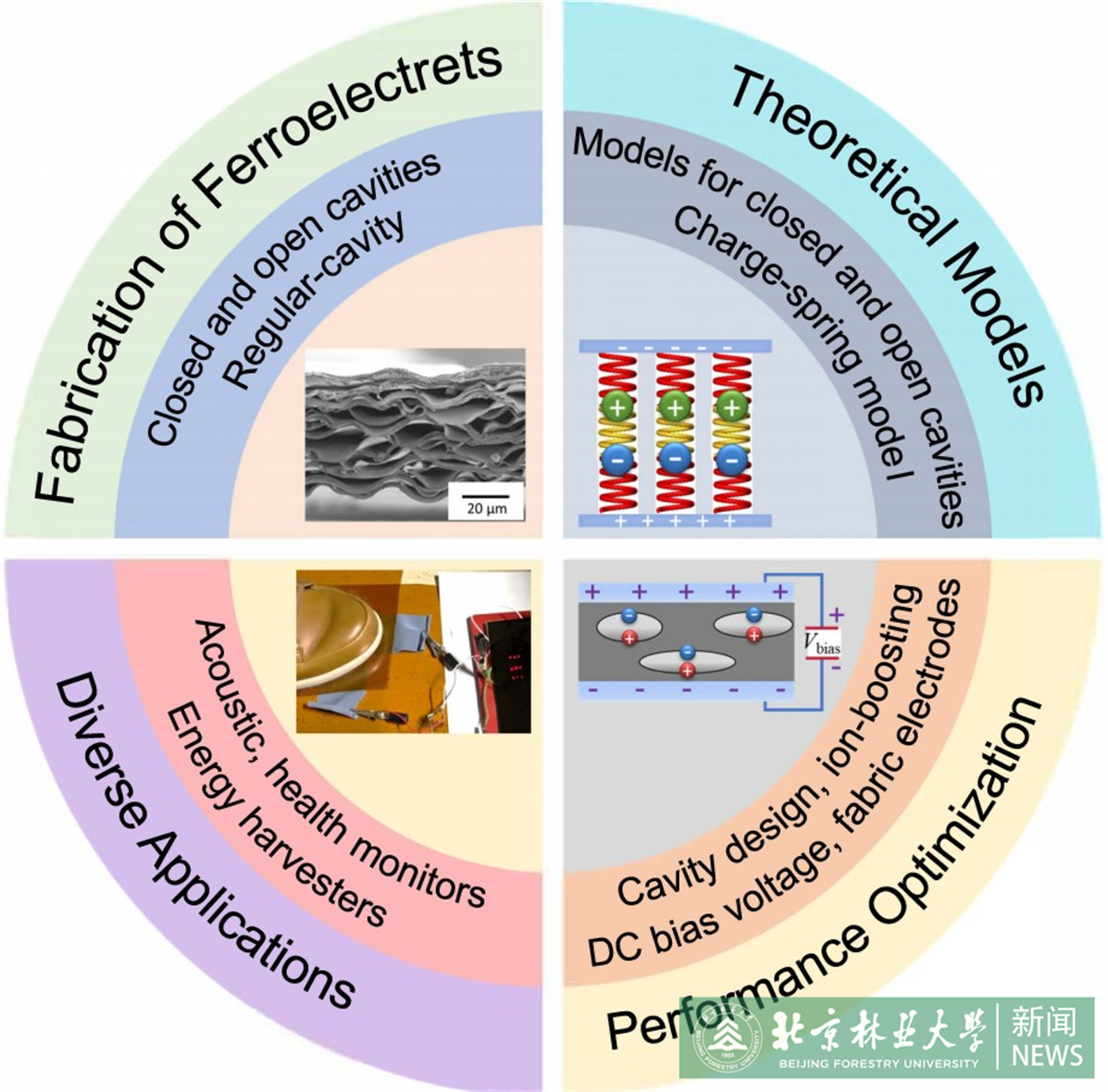Latest news
Recently, a significant paper titled "Recent Advances in Ferroelectret Fabrication, Performance Optimization, and Applications" was published in the prestigious journal Advanced Materials, which boasts a five-year average impact factor of 30.2. This paper was co-authored by Associate Professor Wang Ningzhen and Master's student Zhang He from the School of Technology at BFU. Beijing Forestry University is the signature unit of the first author, and the research received the funding support by the National Natural Science Foundation of China (Grant No. 12174102) and the Key Laboratory of Advanced Materials of Ministry of Education, China (No. AdvMat-2023-16).

With the emergence of Internet of Things and Body Area Networks, the demand for noninvasive health monitoring devices that continuously track users' physical conditions in fields like chronic disease treatment, sports training, and construction work is growing steadily. This has prompted an upswing in research into flexible and biofriendly piezoelectric materials.

The growing demand for wearable devices has sparked a significant interest in ferroelectret films. They possess flexibility and exceptional piezoelectric properties due to strong macroscopic dipoles formed by charges trapped at the interface of their internal cavities. This review of ferroelectrets focuses on the latest progress in fabrication techniques for high temperature resistant ferroelectrets with regular and engineered cavities, strategies for optimizing their piezoelectric performance, and novel applications. The charging mechanisms of bipolar and unipolar ferroelectrets with closed and open-cavity structures are explained first. Next, the preparation and piezoelectric behavior of ferroelectret films with closed, open, and regular cavity structures using various materials are discussed. Three widely used models for predicting the piezoelectric coefficients (d33) are outlined. Methods for enhancing the piezoelectric performance such as optimized cavity design, utilization of fabric electrodes, injection of additional ions, application of DC bias voltage, and synergy of foam structure and ferroelectric effect are illustrated. A variety of applications of ferroelectret films in acoustic devices, wearable monitors, pressure sensors, and energy harvesters are presented. Finally, the future development trends of ferroelectrets toward fabrication and performance optimization are summarized along with its potential for integration with intelligent systems and large-scale preparation.
Paper link: https://doi.org/10.1002/adma.202400657
Written by Wang Ningzhen and Zhang He
Translated and edited by Song He
Reviewed by Yu Yangyang










